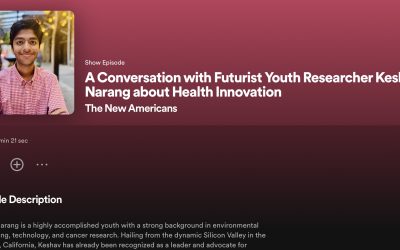As a high school student with an unwavering commitment to clean energy, I recently had the privilege of meeting with Alejandra, a Science Fellow at the California Energy Commission (CEC). Our conversation shed light on the vital work of the CEC and its mission to combat climate change and promote sustainable energy solutions. Join me on this journey into the heart of California’s clean energy initiatives.
My name is Keshav, and I’m a strong proponent of clean energy and environmental sustainability. I’ve actively participated in multiple organizations dedicated to combating climate change. My involvement in these organizations has shown me the importance of engaging young minds in understanding complex policies and the scientific intricacies of climate projects. In my quest to bridge the gap between scientific knowledge and legislative action, I reached out to the Chair of the California Energy Commission. I was incredibly grateful for the opportunity to meet Alejandra from the Chair’s office at the CEC.
Meeting Alejandra:
My meeting with Alejandra, a scientist with a background in biomedical physics, was a revelation. She introduced herself as a Science Fellow in the Chair’s office at the CEC. Her diverse expertise was a testament to the multidisciplinary approach the CEC takes in addressing California’s energy challenges.
Understanding the California Energy Commission (CEC):
Before delving into the specifics of our conversation, it’s crucial to understand the California Energy Commission and why it was created. The CEC was established in 1974 in response to the oil crisis, with a primary mission to lead the state to a sustainable energy future while reducing energy costs and environmental impacts. Members are appointed by the Governor and is responsible for ensuring a reliable and resilient energy system for California.
The CEC’s Ambitious Goals:
Alejandra began by explaining the CEC’s mission to achieve 100% clean energy by 2045, as mandated by the SB 100 bill passed in 2021. This ambitious goal reflects California’s commitment to a sustainable and environmentally friendly energy future.
Exploring Offshore Wind Energy:
Our conversation led to an exploration of offshore wind energy, a promising source of clean power. Alejandra detailed the technology behind offshore wind and its potential to provide a reliable energy source, especially during peak demand periods.
She explained the challenges of aligning energy supply with demand and how offshore wind could address this issue. This conversation left me inspired by the innovative solutions the CEC is exploring to tackle our energy needs sustainably.
Collaboration and Technological Advancements:
I was eager to understand how different organizations and experts collaborate to advance clean energy goals in California. Alejandra shed light on the critical roles scientists play in both the legislative and executive branches.
She elaborated on the process of evaluating research proposals from universities and how the CEC supports technological advancements. This insight highlighted the importance of scientific contributions in shaping clean energy policies and projects.
Getting Involved and Staying Informed:
Our discussion emphasized the significance of staying informed about the CEC’s work and clean energy initiatives in California. Alejandra mentioned programs like the Executive Fellows program, which offers college students opportunities to directly engage with the commission’s efforts.
How Youth Can Help:
For young individuals like me, there are several ways to get involved and support the CEC’s mission. Firstly, staying informed and advocating for clean energy policies is crucial. Attend public hearings and meetings, voice your opinions, and participate in discussions on social media to raise awareness about clean energy initiatives.
Additionally, consider exploring educational programs and internships offered by the CEC, such as the Executive Fellows program mentioned earlier. These opportunities allow young people to contribute their ideas and energy to the clean energy movement actively.
My encounter with Alejandra and the California Energy Commission unveiled the pivotal role the CEC plays in shaping California’s clean energy future. The CEC’s dedication to collaboration, innovation, and youth engagement is propelling California toward a sustainable and eco-friendly energy landscape.
As youths of today shaping our planet’s health, we should learn to contribute to the clean energy movement and continue advocating for a greener future. Let us support the CEC’s mission to make California a leader in clean energy solutions. Together, we can drive positive change for our planet.
References
- California Energy Commission Official Website: https://www.energy.ca.gov/
- SB 100 Legislation, https://www.energy.ca.gov/sb100
- “Growing California’s Renewable Energy Portfolio.” California Energy Commission, California Energy Commission,https://www.energy.ca.gov/about/core-responsibility-fact-sheets/developing-renewable-energy#:~:text=Growing%20California%27s%20Renewable%20Energy%20Portfolio&text=The%20RPS%20requires%20utilities%20to,percent%20clean%20energy%20by%202045.







